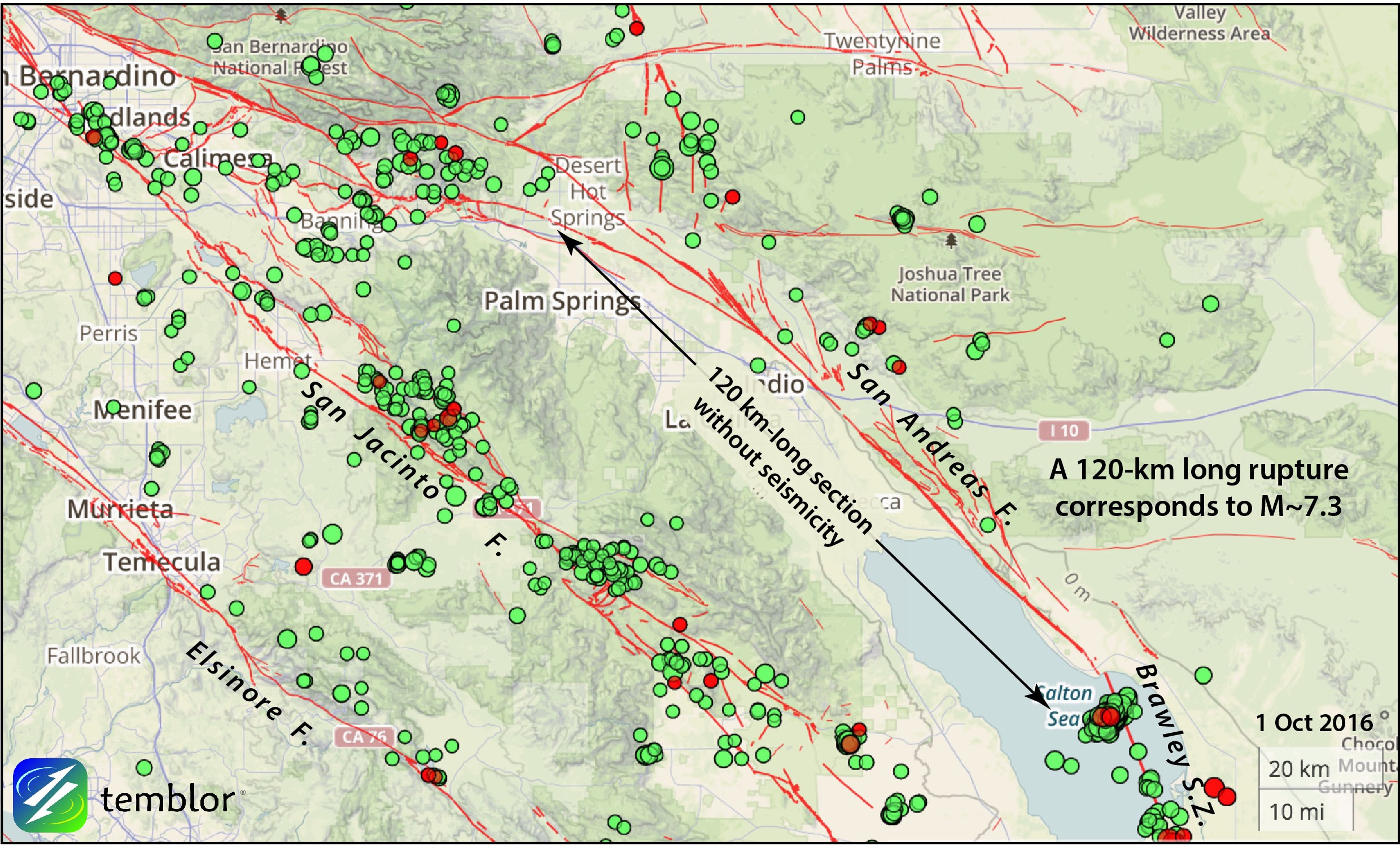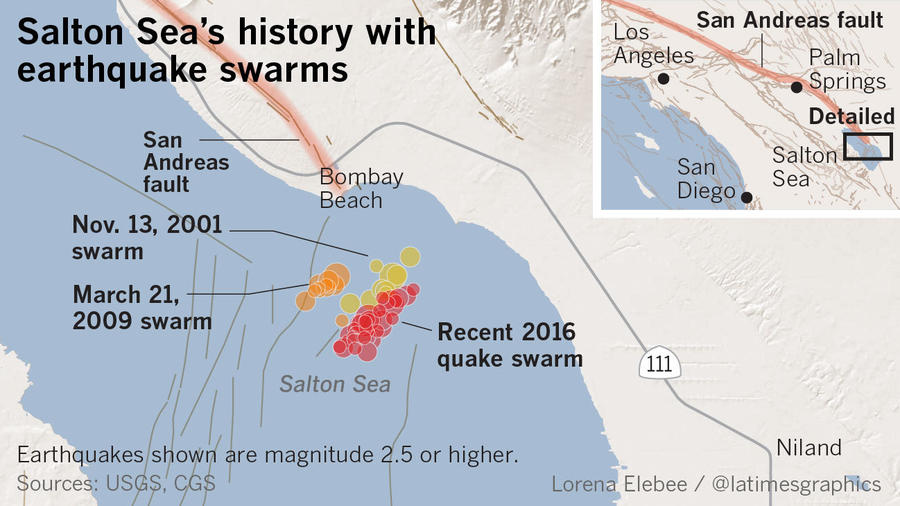By David Jacobson, Temblor
Check your hazard rank in Temblor

The one-week California Earthquake Advisory ended, following a week of increased seismicity near the southern portion of the San Andreas Fault. The advisory, issued on September 27th, came in response to nearly 300 earthquakes in the Brawley Seismic Zone underneath the Salton Sea. While no major earthquakes occurred during the advisory, scientists estimated that there was a 0.03%-1% chance a M=7+ earthquake could occur along the San Andreas Fault through October 4, with decreasing likelihood through time. This portion of the San Andreas has not experienced a large earthquake since 1690, causing scientists to believe that likelihood of rupture is higher than in other regions.

Despite not undergoing a large rupture in recent history, this section of the San Andreas is no stranger to earthquake swarms. As can be seen in the above image from the LA Times, in both 2001 and 2009, almost the exact same spot saw similar swarms, though this recent one was the largest.
For reasons such as these, the advisory was released, and received significant publicity. As Thomas Jordan, director of the Southern California Earthquake Center said, “Any time there is significant activity in the vicinity of the San Andreas fault, we seismologists get nervous.”
In response to this advisory, at least one county took action. San Bernardino closed city hall and will not reopen it until today (Wednesday October 5). The building, a mere stones throw from the San Andreas Fault has a Temblor® Hazard Rank of 91 and was built prior to the 1971 Sylmar Earthquake, after which, earthquake codes changed significantly. Therefore, the county thought it was prudent to take precaution.

While some people may consider advisories like this strange or unusual, they are occasionally released, though with limited publicity. Kelly Hudson, deputy director of crisis communications for the Governor’s Office of Emergency Services said that alerts such as this are issued once or twice a year.
Just because the advisory ended, does not mean the risk of an earthquake has as well. Now, the chance of a major earthquake returns to background levels, which, in any given week is 1:6,000. While this may seem small, earthquakes can happen at any time, and a southern San Andreas Fault earthquake could cause serious damage to Los Angeles and the surrounding region. Therefore, advisories provide a reminder that we live in earthquake country and that being knowledgeable about the hazards that surround us, and preparing ourselves are some of the most important things we can do.
For up-to-date earthquake news, follow Temblor on Facebook, Twitter, and LinkedIn, or sign up to receive email updates.
Sources:
LA Times Article
LA Times San Bernardino Article
ABC News Article
USGS Advisory Text
CalOES Advisory Text
Related Blogs
California Issues One-week Earthquake Advisory for San Andreas Fault
M=4.3 Bombay Beach swarm lights up the southernmost tip of the San Andreas Fault
- Earthquake science illuminates landslide behavior - June 13, 2025
- Destruction and Transformation: Lessons learned from the 2015 Gorkha, Nepal, earthquake - April 25, 2025
- Knock, knock, knocking on your door – the Julian earthquake in southern California issues reminder to be prepared - April 24, 2025
